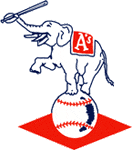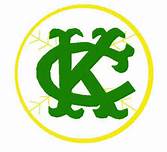By Phil Ellenbecker
Three weeks and nine games into the 1955 season, Kansas City received a rude how-di-do to major league baseball.
Not that the Athletics’ first season in the American League and Kansas City’s first in major league baseball, after a move from Philadelphia, had been a honeymoon up until then. The A’s entered their Saturday, April 23 game with Chicago with a 2-6 record.
Then the bottom fell out. The White Sox raked through six Kansas City pitchers for 29 hits en route to 29-6 shellacking before before a crowd of 18,338 at Municipal Stadium.
It got ugly before it got uglier. Chicago jumped on Kansas City for a 4-0 lead in the top of the first, but the A’s closed to 4-3 in the bottom of the inning. The White Sox responded with seven runs in the second and three more in the third for a 14-3 lead, then made it more unsightly with six more runs in the sixth and seven more in the seventh and eighth frames.
Starting pitcher Bobby Shantz, the American League’s 1952 MVP while the A’s were in Philadelphia, absorbed most of the damage, surrendering nine runs, eight earned, in 1 2//3 innings. But no one got off easy for the KC pitching staff this day. Lee Wheat (two earned runs in 1/3 inning), Bob Trice (5 ER, 1 1/3 IP), Moe Burtschy (6 ER, 2 1/3 IP), Bob Spicer (5 ER, 1 2/3 IP) and Ozzie Van Brabant (2 ER, 1 2/3 IP) all had hefty damage done to their ERA.

(Season stats for those who mopped up for Shantz: Wheat, 22.50 ERA in two innings pitched; Trice, 9.00 ERA, 10 IP; Burtschy, 10.32 ERA, 11.1 IP; Spicer, 33.75, 2.2 IP; Van Brabant, 18.00, 2 IP. The A’s had the AL’s worst ERA that year of 5.35.)
(Wheat, Trice and Van Brabant were gone for good from the major leagues by next season. Burtschy and Spicer were gone after 1956. Burtschy, who had a blazing fastball but was constantly plagued by lack of control, actually wasn’t too bad in his final season: 3-1 record, 3.95 ERA in 43 IP; Spicer, on the other hand, 19.29, giving him a final major league ERA of 27.00 0 in 5.0 innings.)
Thirteen White Sox runs on April 23 came across courtesy of the long ball. Bob Nieman was the biggest basher, unloading a three-run homer in the first inning and a two-run shot in the third en route to a 3-for-4 day with seven runs batted in from his No. 5 slot in the lineup. Those were Nieman’s fourth and fifth homers of the season — nearly halfway to an 11-homer season with 53 RBI and a .283 average. (Nieman was a pretty solid hitter in a 13-year career with a .295 average and a best number of homers of 21 in 1959).
Sherman Lollar, the No. 8 hitter, also padded his stats with two solo homers, his first two four-baggers of the year, as he went 5 for 6 with 5 RBIs. Minnie Minoso went 4 for 5 with 5 RBIs, including a two-run homer.
Perhaps if Jim Finnegan hadn’t erred on Minoso’s grounder in the top of the first it might have been different. Maybe. Chico Carrasquel singled to center leading off the game and Nellie Fox flied out. Carrasquel scored on Finnegan’s error and two batters later Nieman unloaded his first homer, scoring Minoso and George Kell. Shantz retired the next two batters.
After the A’s came back with three in their half of the first, including a two-run homer by Bill Renna, Lollar led off the second with a homer as the White Sox began to pull away with seven runs.
And that’s about all you need to know. Ugly from the start. And the rest, you could say, is history. Ugly history. All the way through 1967. And then onto Oakland and better days.


